What Type of Acne Do You Have? Different Types of Acne Explained
By Abby Vinas
Types of Acne
•
3 Comments
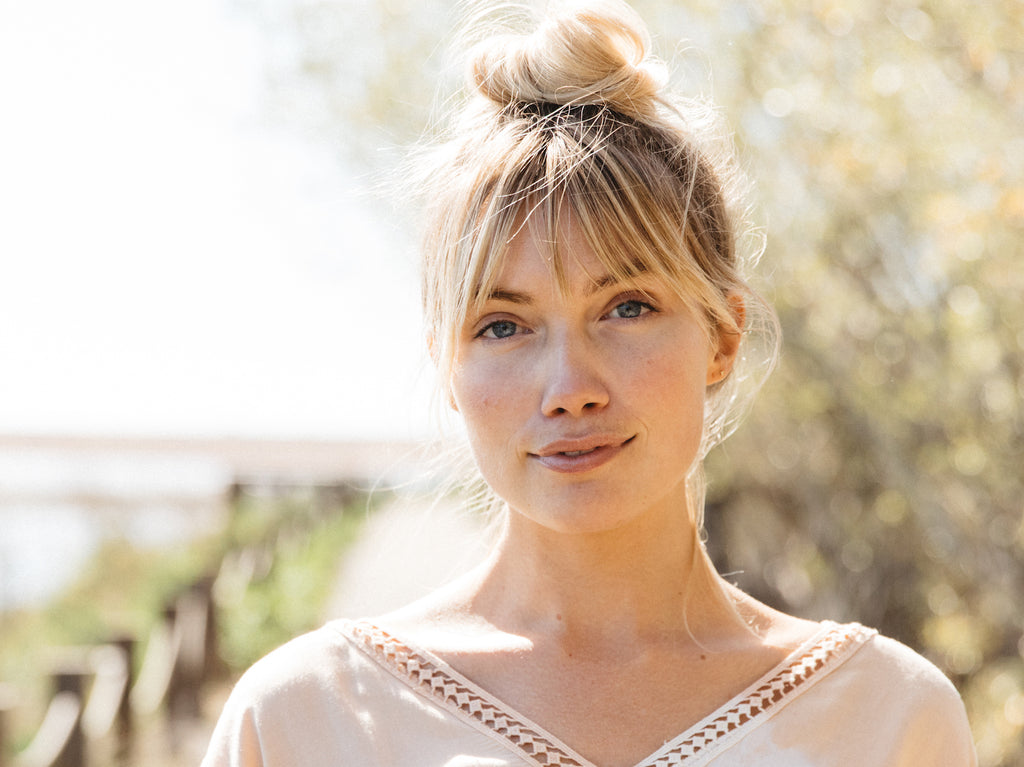
According to the American Academy of Dermatology, approximately 50 million Americans struggle with acne each year. Whether you experience it in your teen years (like 85% of 12-24-year-olds do), or it strikes a little later on, it’s pretty likely you’ll have at least some experience with acne in your lifetime. But did you know that there are many types of acne that can affect your complexion?
It’s true—acne is a broad term that encompasses a variety of skin ailments. It's a condition that involves much more than an occasional pimple or zit. Acne comes in varying severity and it affects everyone differently.
- Types of acne
- How acne develops
- Consider additional acne treatments
- Acne severity
- Other types of skin conditions
- Best acne treatment option
- Key Takeaways
To successfully treat your acne, it’s essential to recognize and diagnose the different acne types you are struggling with (you may have more than one). Bear with us, these aren't the nicest names or descriptions, but knowing them can help you better manage your acne and achieve that clear complexion you’ve always dreamed of!
Types of Acne
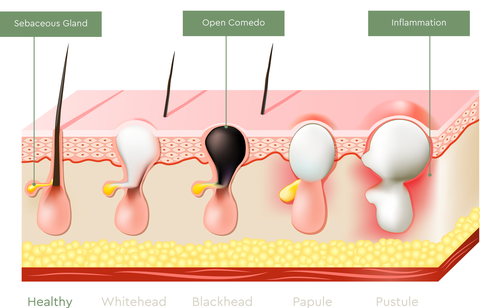
Acne vulgaris is a broad term for the most common of the three main types of acne. Acne vulgaris encompasses different types of acne lesions (also known as pimples).
Acne vulgaris forms when hair follicles become clogged with excess sebum, bacteria, and dead skin cells. This results in a comedo, also known as a clogged pore. Acne vulgaris can be commonly found on the face, back, and chest, as these areas of the body tend to be saturated with pilosebaceous units.
As skin regenerates, old cells slough off, and if these dead skin cells aren’t flushed from the pores and manage to combine with sweat and oil, they could be trapped and result in the formation of a pimple.
Blackheads, whiteheads, papules, pustules, nodules, and cysts are the most common types of pimples.
Blackheads
Blackheads, also known as open comedones, generally form on the face, neck, chest, and back. They’re categorized by their black appearance where the pimple comes to a head. The black marking isn’t from dirt or infection but happens when the sebum oxidizes at the surface. Blackheads are generally caused when pores are clogged due to debris and oil buildup.
Whiteheads
Whiteheads are clogged follicles covered by a thin layer of skin that appear as white bumps or spots.
Papules
Papules are inflamed lesions that may appear red, and can be sensitive and painful.
Pustules
Pustules are another type of pimple that's’ an inflamed lesion. They are generally pus-filled and may appear white or yellow. Though it may be tempting to extract their pus, popping pustules can lead to acne scarring. Want to learn more? Learn how to prevent acne scars here.
Nodules
Nodules are a severe form of acne lesion that develop under the skin; they don’t generally contain pus but are hard to the touch. These acne lesions are generally between 1 and 2 centimeters wide.
Cysts
Cysts are a severe form of acne lesion that are inflamed and filled with pus. They are generally painful and may require professional medical treatment.
Other Acne Conditions
Beyond acne vulgaris, there are different kinds of acne conditions, including acne fulminans and acne mechanica.
- Acne fulminans: This is a rare but very severe form of acne that comes on abruptly in adolescent males, characterized by inflammatory nodular acne on both the chest and back. It can result in severe scarring and painful joints, along with other health issues such as fever and joint pain.
- Acne mechanica: This form of acne is triggered by excess pressure, heat, and friction on the skin, and is often found among athletes and those already prone to acne breakouts. It’s characterized by small bumps that can range from tiny comedones to inflamed lesions.
Clearer skin in as little as two weeks.
This 3-step routine combines the most effective (clinically-proven) acne fighting ingredients with powerful plant intelligence to leave your skin nourished, refreshed, and clear.
Learn More
How Acne Develops
Answering the question, “what type of acne do I have?” starts with learning what exactly acne is and how it develops. In the most basic sense, acne is the emergence of infected or inflamed sebaceous glands in the skin. But how do these inflamed sebaceous glands translate into blemishes and pimples that cloud your complexion?
Here’s how it works: our pores are connected to a system of oil glands directly beneath the skin. Within these oil glands, sebum is produced. This substance is meant to keep our skin moisturized and healthy, but excessive production of this oil can lead to acne.
When the oil is pushed through the follicle, it can clog the pore and create a plug in the skin if it attaches to dead skin cells or bacteria. Sebum will continue to build up behind the plug, resulting in a pimple.

General Causes
There’s a lot of speculation as to possible causes of acne, but what it comes down to is:
- Genetic history with acne
- An excess of the androgen hormone
- Too much oil production
- The presence of bacteria
Some of these factors you can’t control. However, you can take measures to care for your body and skin to prevent and improve acne flare-ups. Even simple changes to your skincare routine can help—learning how to wash your face properly, for example, can help clear your face of debris and excess oil production.
Hormonal Changes
Acne vulgaris generally develops during the teen years, when the onset of puberty causes the hormonal level to fluctuate—this type of acne is also referred to as “hormonal acne.” As hormone levels rise, especially androgens, the skin glands begin producing larger amounts of sebum.
Puberty isn’t the only time we experience hormonal changes. Women experience regular variations in hormone levels, specifically that of estrogen and androgen (typically in line with their menstrual cycle). Men also experience hormone level fluctuations, especially in their teens, but this usually mellows out by adulthood.
Hereditary Factors
Acne is also a result of hereditary factors. Children whose parents have dealt with acne are more likely to struggle with this skin condition. While it’s not a genetic disease, hereditary components have been linked to the presence of this skin condition.
And that goes for many types of skin conditions! Ever asked yourself: “Why do I have dry skin?” Family history can have a lot to do with the way your skin looks and feels, and is usually a good indication of whether or not an individual will deal with acne breakouts. The good news is, using a vegan moisturizer in combination with a non-invasive face wash can help you address dry skin and prevent acne flare-ups.
Stress
While stress doesn’t directly cause acne, it can trigger or exacerbate a breakout. We see this occur in students across the globe when they're handling stress during finals. In a study of 144 female medical students between 22 and 24 years old, researchers found that acne severity was strongly correlated to how much stress the students were facing (using the Perceived Stress Scale). But what’s the physiological response that connects stress to different types of acne?
When you’re stressed, your body releases hormones such as cortisol and adrenaline. When these hormones fluctuate, your skin secretes more oil, which can bring on a breakout or worsen pre-existing pimples.
If you find that your skin is particularly sensitive, be sure to integrate healthy skincare tips customized to your skin type to counteract the inevitable stress in your life.
What Type of Acne Do I Have and How Can I Treat it?
Now that we know how acne develops and the different types of acne, let’s dive deeper so we can answer the important question: “what type of acne do I have?”
Non-Inflammatory Acne
Acne lesions are typically categorized into two main types: non-inflammatory and inflammatory acne. Although there are two primary categories, there are many different types of acne which we'll discuss in even more detail later on.
Non-inflammatory acne is characterized by comedones, which can be open or closed. These comedones are more commonly known as whiteheads and blackheads and are generally referred to as different types of pimples.
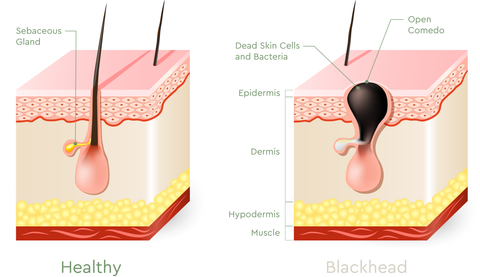
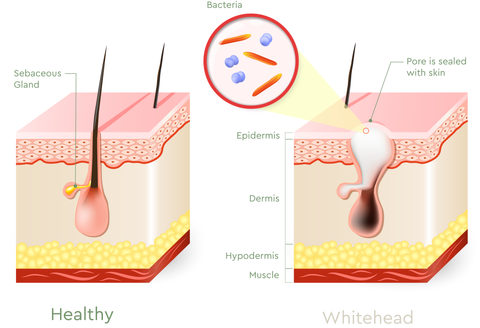
Self-extraction of comedones can cause more harm than good. The follicle walls in blackheads and whiteheads can be ruptured quite easily, and this rupture allows bacteria to enter the surrounding pores and leads to inflamed acne. If that’s not enough to convince you to stay away from pimple popping, check out these warnings from the American Academy of Dermatology.
Extracting acne at home could cause:
- Scarring
- Exacerbated acne
- More painful acne
- An infection
Inflammatory Acne
Inflammatory breakouts are a result of P. Acnes bacteria infecting the follicles, causing a response from the body that can lead to acne breakouts. There are four types of inflammatory acne, sometimes commonly referred to as different pimple types: papules, pustules, nodules, and cysts.
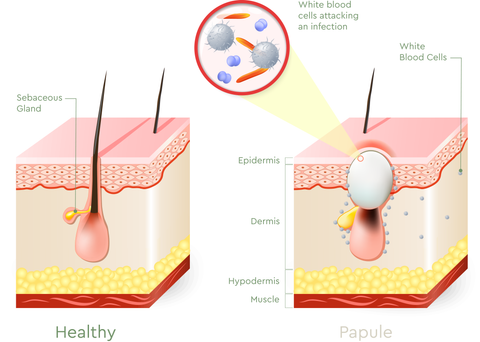
Is the Type of Acne I Have Considered Severe?
Severity Grades
When it comes to acne diagnosis, acne vulgaris is measured on grades of severity and can be diagnosed into three main different classifications: mild, moderate, and severe.

Mild
Mild acne is characterized by a small number of acne lesions (less than 20 comedones and 15 lesions).
Moderate
People with moderate acne typically have between 20 and 100 comedones, and 15 to 50 inflammatory lesions.
Severe
When an individual is diagnosed with severe acne, a dermatologist not only considers comedones and surface level lesions, but they’ll also look to see if there are any cystic lesions present. Severe acne is categorized using the following metrics:
- 5 pseudocysts or more
- 100 comedones or more
- 50 inflammatory lesions or more
Other Types of Skin Conditions
There are other different types of acne that are not considered acne vulgaris, acne fulmians, or acne mechanica. They can look similar and exhibit comparable symptoms, but they tend to be much more difficult to treat and alleviate. If you are struggling with severe acne-like symptoms, it’s important to determine exactly what is causing your skin condition to get proper treatment.
Acne Conglobata
Acne conglobata is an uncommon and severe form of acne that’s characterized by painful abscesses,irregular scars, and it features a large number of deep and inflamed comedones, nodules, and draining cysts all connected underneath the surface of the skin.
This type of acne is generally very hard to treat and it may require consultation with a professional dermatologist along with an effective skincare routine.
Gram-Negative Folliculitis
Gram-negative folliculitis is a bacterial infection that closely mimics acne, but in reality, it's a pustular rash. Doctors can diagnose this condition with a Gram stain, but this condition can be difficult to treat, as the types of bacteria present in this condition don’t respond to most antibiotics used to treat severe acne.
This infection can arise from continued use of certain long-term antibiotics prescribed to treat acne; this is because the body builds up an immunity to these antibodies over time, resulting in worse acne flare-ups.
Pyoderma Faciale
Pyoderma faciale can mimic both acne and rosacea, but it is neither. Here are a few key differences to note when diagnosing acne and rosacea vs. pyoderma faciale:
- Unlike severe acne, this condition comes on abruptly and can develop rapidly.
- Pyoderma faciale is not a cause of oil buildup on the skin.
- Acne can spread throughout the body, whereas pyoderma faciale only appears on the face.
- Acne can affect men and women equally, but pyoderma faciale disproportionately impacts women.
- Unlike rosacea, pyoderma faciale doesn’t affect the eyes.
- Pyoderma faciale is not associated with a flushed appearance on the skin.
This painful skin condition predominantly afflicts women, usually between the ages of 15 and 46 years old, and its onset is quick and immediate. Individuals with this skin condition will exhibit cysts, pustules, and nodules seemingly overnight. There are usually no comedones present with this condition on its own, but it is known to accompany cases of acne vulgaris. Usually, this skin condition lasts no longer than a year and is not associated with the production of oil in the skin. This is a rare condition and is usually best treated with medication prescribed by a dermatologist.
The most common medications to treat pyoderma faciale include:
- Antibiotics
- Isotretinoin
- Systemic steroids
Emotional Impact
No matter the severity or type, individuals dealing with acne breakouts and other skin conditions often struggle with emotional effects as a result. For teenagers early in their social development, skin ailments such as acne can cause self-esteem issues and in severe cases, depression. Even with the best young adult acne treatment put to use, acne breakouts and scarring can mar a young person’s self-image as physical appearance becomes important to feelings of self-worth.
The threat of emotional damage doesn’t stop in adolescence, however. Adults who deal with different kinds of acne can also face negative emotional impact as a direct result of their skin condition. One study found that adult females with mild to moderate acne experienced higher levels of emotional and social stress.
Whether you deal with the occasional blackhead or have been experiencing severe and painful breakouts, you’re not alone. Millions across the country struggle with this painful skin condition daily. When acne flares, causing physical discomfort and pain and negative psychosocial effects, treatment is vital.
Be sure you know how to figure out your skin type as this understanding can aid you in any treatment you pursue. Narrowing in on the acne types you struggle with will enable you to select an effective treatment tailored to your skin type to clear your complexion and prevent future breakouts.
Which Treatment is Right for My Acne Type?
When searching for the right treatment option for the kind of acne you have, you should keep three things in mind: your skin type, your skin goal, and skincare ingredients.
Our line of vegan skincare routines are designed to suit your unique skin type to help you better treat breakouts, or simply even out or brighten your complexion.
We recommend the Clear Skin Routine for mild to moderate acne.
This simple 3-step routine is clinically proven to clear breakouts. It’s designed to treat your skin with the kindness you deserve and improve your overall skin health without harsh chemicals or toxins.
You can experience clearer skin in as little as two weeks.
What’s more, our selection of skin routine products are carefully constructed with 100% vegan, cruelty-free, paraben-free, and sulfate-free ingredients so you can feel great about your skin routine, and look great, too. Each of our products uses our signature Floralux® complex—an improved chlorophyll formula that’s designed to nourish the skin while fighting off acne-causing bacteria.
Want an acne treatment that works?
Our simple 3-step routine is clinically proven to clear breakouts. Treat your skin with the kindness you deserve and improve your overall skin health without harsh chemicals or toxins.
Learn More
Key Takeaways
- There are two main types of acne: non-inflammatory and inflammatory.
- Acne can cause significant negative psychological effects including lowered self-esteem, depression, and anxiety.
- The most common types of pimples are blackheads, whiteheads, papules, pustules, nodules, and cysts.
- Dermatologists diagnose acne vulgaris in three grades of severity: mild, moderate, and severe.
- There are more severe skin conditions that are commonly mistaken for common acne vulgaris, including acne fulminans, pyoderma faciale, and more. These types of skin conditions should be treated with the help of a dermatologist.
- Left untreated, acne can leave permanent scars, so it’s essential to begin treatment as soon as possible.
- Learning about your skin and how to take care of it can help you treat the type of acne you have, and get you one step closer to that gorgeous glow that lies beneath.
- When choosing skincare products, you should consider: what type of acne you have, your skin’s overall condition, your goal for your complexion, and how different ingredients help or hurt your skin.
- bioClarity helps nourish your skin using 100% vegan and cruelty-free acne products.

Abby Vinas
Abby Vinas has long been an active member of the holistic health community, advocating in favor of its benefits to both our physical and emotional well-being. Her commitment to leading a healthy lifestyle has made her an authority on self-care practices. Abby is passionate about fitness, nutrition, and proper skincare, and is also an avid lover of avocado toast and dog-petting.
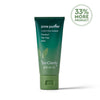
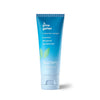
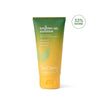









Another acne worth mentioning is fungal acne. The official names for it are Pityrosporum Folliculitis and Malassezia Folliculitis. It is caused by a yeast called Malassezia that naturally occurs in the skin but could cause acne. They appear as small bumps, pustules, usually on the forehead and chest and possibly the back. The yeast feeds on oils/fatty acids, regardless of which type (Linoleic, Oleic, etc) which are often used in hydrating skincare products and due to the presence of oils they will only maintain the acne problem. This type of acne tends to be mistaken for acne Vulgaris and will therefor be treated the wrong way and because of that not go away or keep being re-triggered. The use of funghi killing agents ( Pyrithione Zinc, Sulfur, Salicylic Acid, Ketoconazole, Tea Tree oil and even Honey) will make it go away while oils should be avoided.
Pimple with a hard center
This was really helpful and insightful. Thank you